- Home
- Priscilla Royal
Wine of Violence
Wine of Violence Read online
Wine of Violence
Wine of Violence
Priscilla Royal
www.priscillaroyal.com
Poisoned Pen Press
Copyright © 2003 by Priscilla J. Royal
First Edition 2003
Library of Congress Catalog Card Number: 200311196
ISBN-10 Print: 1-59058-088-5
ISBN-13 eBook: 978-1-61595-184-0
All rights reserved. No part of this publication may be reproduced, stored in, or introduced into a retrieval system, or transmitted in any form, or by any means (electronic, mechanical, photocopying, recording, or otherwise) without the prior written permission of both the copyright owner and the publisher of this book.
Poisoned Pen Press
6962 E. First Ave., Ste. 103
Scottsdale, AZ 85251
www.poisonedpenpress.com
[email protected]
Epigraph
Hear, O my son, and receive my sayings;
and the years of thy life shall be many.
Enter not into the path of the wicked,
and go not in the way of evil men.
For they eat the bread of wickedness,
and drink the wine of violence.
Proverbs 4:10, 14, 17 (King James Version)
Dedication
To my mother,
Betty J. Hallenbeck Royal (1905-1998),
who taught me the joy of reading
and the love of a good story.
Contents
Epigraph
Dedication
Acknowledgments
Foreword
Chapter 1
Chapter 2
Chapter 3
Chapter 4
Chapter 5
Chapter 6
Chapter 7
Chapter 8
Chapter 9
Chapter 10
Chapter 11
Chapter 12
Chapter 13
Chapter 14
Chapter 15
Chapter 16
Chapter 17
Chapter 18
Chapter 19
Chapter 20
Chapter 21
Chapter 22
Chapter 23
Chapter 24
Chapter 25
Chapter 26
Chapter 27
Chapter 28
Chapter 29
Chapter 30
Chapter 31
Chapter 32
Chapter 33
Chapter 34
Chapter 35
Chapter 36
Chapter 37
Chapter 38
Bibliography
More from this Author
Contact Us
Acknowledgements
To the Every Other Thursday Night Writers’ Group (Kris Brandenberger, Bonnie DeClark, Liz Hartka, Anne Maczulak, Sheldon Siegel, Meg Stiefvater, and Janet Wallace). Your encouragement and insights have been invaluable.
To Katherine V. Forrest and Michael Nava, my first mentors. Had it not been for you, I never would have achieved this.
To Peter Goodhugh for being so generous with his time to an unpublished writer and sending wonderful photographs, pamphlets and books as well as answering all my questions.
To Judy Greber (Gillian Roberts), a fine writer and teacher, who got me started in the right direction with this book.
To Sara Hartley, M.D., another fine teacher, for patience, wisdom and good humor.
To Henie Lentz for, among many things, finding all those wonderful medieval histories.
To Katherine Neville and Sarah Smith for invaluable guidance in the joys of historical research and warm encouragement to budding authors in all fields.
To Joanne Pence for encouragement as well as telling me about Book Passage and the California Writers Club.
To Barbara Peters, Robert Rosenwald and Monty Montee at Poisoned Pen Press for making my 50-year-old dream come true.
To Elaine and Bill Petrocelli and the staff at Book Passage in Corte Madera, CA, with gratitude for providing classes—and mystery conferences—to die for.
To Barbara Truax and the Marin Branch of the California Writers Club for providing speakers and a supportive environment for writers of all genres.
Foreword
Although Tyndal Priory and its inhabitants never existed, the Order of Fontevraud most certainly did. It was a very powerful religious institution from its founding at the turn of the twelfth century by Robert d’Arbrissel until shortly after the French Revolution. Like the Order of the Paraclete (once headed by Heloise, whose correspondence with her husband, Peter Abelard, is one of the treasures of medieval literature), Fontevraud was one of the rare Orders of double houses where a woman was in charge of both male and female monastics.
A “double house” is a religious living arrangement where nuns and monks work and live in the same enclosed setting. Before celibacy became the rule in the western Church, the term meant a monastery where married monks and nuns, as well as single ones, could live together and raise their children. After celibacy became the required norm, a few double houses continued to exist, although the men and women were very carefully segregated for most of their daily activities and the head of such an establishment was almost always a man.
Fontevraud was an exception. Founded in France, the mother house was in Anjou and was headed by an abbess. Parts of that abbey remain. Although the Order was a favorite amongst aristocratic women, it also accepted nuns from other social classes as well as women who had been prostitutes, a unique practice in any religious community at the time.
There were four daughter houses of Fontevraud in England, all under the control and direction of the abbess in France. Technically, they were each headed by prioresses, although the leader of Amesbury was often called an abbess, in part because the community had once been a Benedictine abbey and in part out of courtesy for its prominence. Amesbury was certainly the most important of the four and the most famous. Two queens, Eleanor of Aquitaine (Henry II) and Eleanor of Provence (Henry III), retired there in their last years. Eleanor of Provence was buried at Amesbury; Eleanor of Aquitaine was buried at the mother house in France. Today, all that is left of Amesbury Priory is part of the parish church. As mentioned in this story, Grovebury was a small administrative center. Nothing remains of it now. Of the other two houses, the site at Nuneaton is being excavated, but Westwood lies buried under a parking lot.
Unfortunately, I have been unable (so far) to locate a complete architectural plan for any Fontevraud house. The Cistercians in the thirteenth century also had double houses, and reasonably complete designs for some of their priories are extant; however, they so disliked the idea of having women in their Order at all in the medieval period that their nuns were virtually walled up and allowed almost no freedom of movement. Just how segregated men and women could be in a Fontevraud house, which was run by a woman, is an interesting question. The architecture of the place must have allowed for much more interchange and freedom of movement between the two—at least by the prioress and prior. Without an adequate outline of a Fontevraud house, I have used my imagination to come up with a generic Tyndal, although I have tried to temper fantasy with what did exist. Since I made Tyndal a Benedictine house originally, and almost all single-sex monasteries of the period had relatively similar plans, I have used those generic designs for fictional Tyndal from sources, some of which are listed at the end of this book.
The accuracy of historical details is one problem, but how to portray people, their thoughts and feelings, from an era so distant from our own is another. The fiction author inevitably walks a very narrow line between making the characters sound
too modern to be of the period or making them so different that the modern reader feels little in common with them. Yet histories, literature and other written work from any era suggest that people have changed little in unspoken thoughts and feelings, although different language is used to express them and symbols may have different meanings.
We often judge people in earlier times to be more ignorant and less socially progressive than we; yet no insight bursts upon the world fully formed like Athena from the forehead of Zeus. As the writer of Ecclesiastes pointed out, there is no new thing under the sun. It is certainly true that a particular concept may be given wider or fuller expression in one period as opposed to another (democratic government is one example), but it is unlikely that the concept was absent in the minds of thoughtful people in other times.
Nor should we be smug about whatever progress our generation might make. Not only is history full of dark ages following enlightened ones, but each era has its share of savagery. In the West, we may no longer literally burn people at the stake for heresy, but weren’t the blacklists of McCarthy a form of punishment for a “heresy” of the era? And how many examples can any of us come up with these days where religion raises some to greater compassion and wisdom while lowering others into ignorance, anger, bigotry and even murder, just as it did in the medieval period.
The medieval society is seen as a violent, harsh and cruel one. It could be and often was. Wars were frequent. Life expectancy was short. The slightest illness or wound was cause for serious concern, although medical knowledge in the Arab world was quite sophisticated and vastly superior to that in the West. Sanitation and literacy were minimal but certainly not as nonexistent as many suggest. Torture to obtain a confession was not uncommon, yet the fictional Ralf’s dislike and distrust for the practice were shared by many historical figures. Traitors were executed by publicly hanging, drawing and quartering them. Religious as well as sexual heretics were burned at the stake, although some executioners tied bags of gunpowder around those to be burned so their suffering might end quickly or garroted them prior to the burning. Indeed, each generation may have its unique brutality, but it holds its special mercy as well.
Thus period language, symbolism and dated references aside, it does seem reasonable to conclude that some people from 1270 might well feel and react much as some do today. They might even have come to a few of the same conclusions that a few of us have. Some controversial examples in this book of such a conclusion, however, bear some additional discussion.
Many of us in our middle years equate the life of nuns with Audrey Hepburn in The Nun’s Story. However, most religious women in the medieval period not only were free to move about but were expected to do so if secular matters (especially family ones) demanded. One prioress of Amesbury from the early 1300s, Isabel of Lancaster, spent much of her time not only outside the priory in family visits but also at court and with friends. No one at the time thought this strange or condemned her for it.
Nor were all nuns unworldly, and ignorance of secular life was not even considered a particular virtue. In fact, the founder of the Order of Fontevraud specifically suggested that a widow (albeit an upper-class one) should become the Abbess of Fontevraud because she would know how to run a household and how to deal with both men and women more effectively. Heloise of the Order of the Paraclete, who was an abbess by her early twenties in the 1120s, wrote quite openly about her sexual feelings for Abelard even after they both took vows of celibacy. She was considered an exemplary religious. Hildegard von Bingen (1089-1179), given to an anchoress at the age of eight to be completely closed away from the world, became famous for her practical advice and common sense. Not only was her counsel widely sought by men within the higher ranks of the Church and secular life, but her medical works are interesting for their graphic descriptions of sexual acts and sensations.
And then there is the issue of homosexuality or bisexuality. Both were acknowledged conditions just as they are now, although the ethos of being “gay, bisexual or transgender” simply did not exist in 1270. Despite the disapproval of the Church and the verbalized contempt of society, there were many gay or bisexual men who were accepted and left in peace at the same time others were reviled, tortured, or executed. One openly homosexual king, who didn’t even bother trying to be heterosexual enough to have illegitimate children, was William Rufus, son of William the Conqueror. He was hounded about his way of life from his to-be-sainted Archbishop of Canterbury Anselm but otherwise seems to have lived without overt hostility from most of those in his court. (His murder while out hunting sounds suspiciously like a political coup rather than a moral judgement.) Richard the Lion-Heart, also childless, may have been either homosexual or bisexual, but no one seemed to have cared all that much, or at least all that long. His reputation has remained at almost mythical proportions for over eight hundred years in the West. Edward II, on the other hand, was so hated that he was finally murdered by having a hot poker inserted into his rectum. The symbolism of that act was not lost on his contemporaries.
In the case of both William Rufus and Richard I, they were excellent warriors and kept their love affairs discreet or within the right social class. Edward II, despite being the only one of the three to produce the requisite male heir, cared more about farming than fighting. He also showed poor judgement in choosing and elevating male lovers of lower social orders to high position over men of better birth. Neither act won the hearts of his nobles. Perhaps Edward’s fatal flaw lay less in his sexual than in his social orientation.
Regarding the status of women in my fictional Eleanor’s period, many of us have been told that they were considered “the weaker vessel,” accorded little respect and fewer rights compared to women today. (An interesting conclusion from our society that still questions whether women are quite up to the job of leading the country.) Although there is much truth in the teaching, some of the most independent, highly educated and powerful women in history lived during the medieval time.
Matilda was chosen by her father, Henry I, to succeed him to the English throne after her brother died on the White Ship. She was no shrinking violet when it came to war and fought for the throne against her cousin, Stephen, during Ellis Peters’ Brother Cadfael period. However much men may have disliked her arrogance and whatever excuse they may have used for following her, many of them did indeed follow her, and no one ever accused her of being either a personal coward or indecisive in action.
Following Matilda was her daughter-in-law, the brilliant Eleanor of Aquitaine, whose intricate political and sometimes warlike maneuvering over the reigns of three English kings and one French monarch was a success story Machiavelli should have admired. She, unlike her husband and sons, was successful enough to die, at a very advanced age, quite comfortably in her own bed.
As a last example, and one closer to the time of this story, there is the quiet but effective and well-educated Eleanor of Provence, whose husband, Henry III, openly and often sought her advice in affairs of state. Her influence was controversial, but this may have had more to do with the nationality of her relatives than her gender or the actual quality of her advice.
Those of us from the twenty-first century may doubt that a twenty-year-old could have shown the maturity of thought and action that Eleanor demonstrated as head of Tyndal. The fictional flock in her new priory certainly wondered about that too, being rather older than she, although their primary concern had less to do with her age than with the manner of her selection to the position and her lack of experience. In practice, youth in her social class was often over much earlier than it was even then for those in the lower social classes. Men and women in the small English middle class and even those in the agricultural classes usually married in their mid-twenties, when men could afford to support a family and women could bring some kind of money to start the couple out as independent of their parents. Yet Eleanor of Provence married Henry III of England at age twelve and not only had several children by her twe
ntieth birthday but was also significantly involved in international diplomacy. Henry II was leading men into battle, albeit unsuccessfully, at age fourteen. Most people today would find marriage at twelve for girls rather barbaric, and the majority of us would surely wince at the thought of some fourteen-year-old going off to war. Yet the historically established involvement of both Eleanor and Henry in so much responsibility does rather open the eyes a bit and may even suggest a good debate on how better to direct the capabilities of our own teens. That aside, one observation remains: life may have been much shorter in the Middle Ages, but greater intensity more than made up for brevity when it came to maturity.
For those of you who might have wondered about the use of the word hospital in 1270, I confess to a modernity. Technically, a “hospital” was a “hospice” then, and an “infirmary” was a “hospital”; however, hospice means something so different now, as does infirmary, that I have chosen to use a term that will tell the modern reader what Tyndal’s medical facility really was without confusion. In the medieval period, some “infirmaries” had a hundred beds. To the modern mind, this is not a small infirmary.
Finally, many may not know that the position of crowner evolved into that of our county coroner. Sheriffs in 1270, especially in the larger counties, were often administrative officials (shire reeves) who had as little as possible to do with the daily drudgery of evidence gathering and the hunting up of malefactors. Such mundane activities did not, after all, bring one riches and advancement in a world not that politically different from our own government and corporations. Someone had to do all that dull stuff, however, and it was not uncommon for sheriffs to choose poorer or younger relatives, like Ralf, as their crowners. The sheriff took full credit for the crowner’s successes, of course, while throwing equally full blame for any serious failures back on the lower official.
I hope you enjoy this adventure of Eleanor of Wynethorpe as much as I have enjoyed writing it. Like Brother Cadfael, she will have to deal with the darker side of human nature and much more murder and mayhem than she’d like in the years to come. Thomas, on the other hand, knows full well that his future will be anything but peaceful.

 The Twice-Hanged Man
The Twice-Hanged Man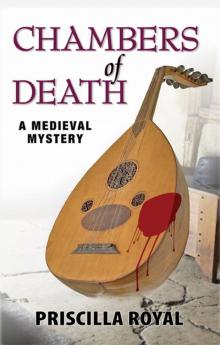 Chambers of Death mm-6
Chambers of Death mm-6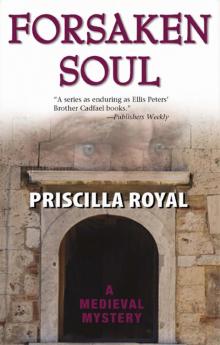 Forsaken Soul
Forsaken Soul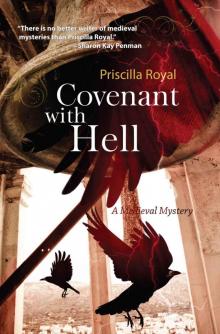 Covenant With Hell (Medieval Mysteries)
Covenant With Hell (Medieval Mysteries)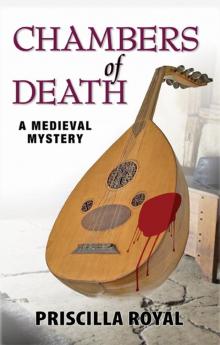 Chambers of Death
Chambers of Death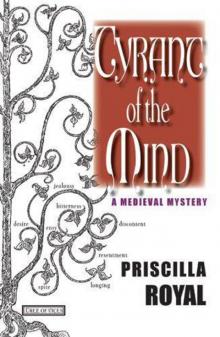 Tyrant of the Mind
Tyrant of the Mind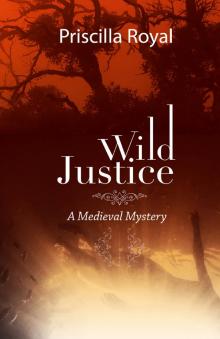 Wild Justice
Wild Justice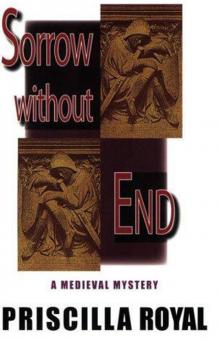 Sorrow Without End
Sorrow Without End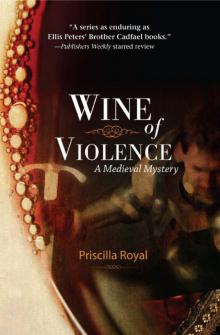 Wine of Violence
Wine of Violence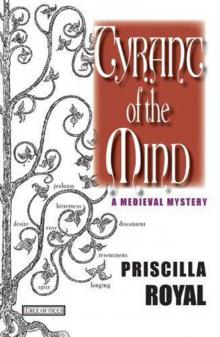 Tyrant of the Mind mm-2
Tyrant of the Mind mm-2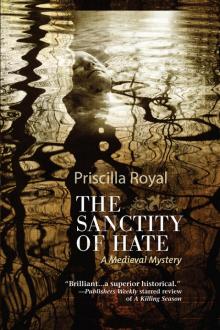 The Sanctity of Hate
The Sanctity of Hate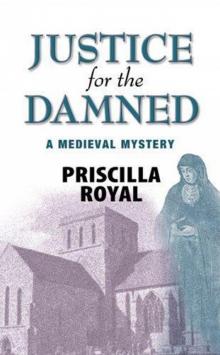 Justice for the Damned
Justice for the Damned The Proud Sinner
The Proud Sinner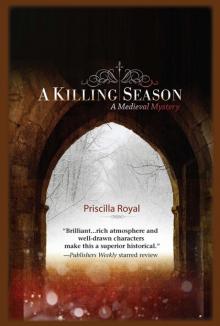 A Killing Season mm-8
A Killing Season mm-8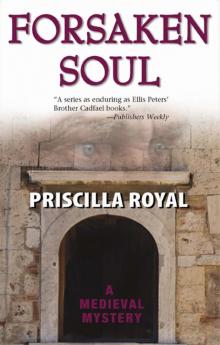 Forsaken Soul mm-5
Forsaken Soul mm-5 Valley of Dry Bones mm-7
Valley of Dry Bones mm-7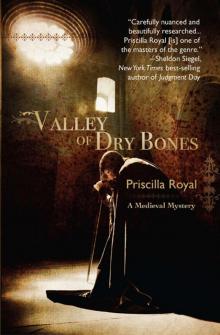 Valley of Dry Bones
Valley of Dry Bones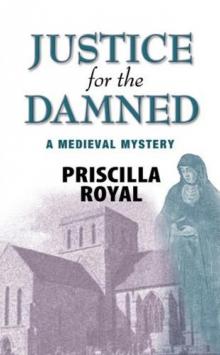 Justice for the Damned mm-4
Justice for the Damned mm-4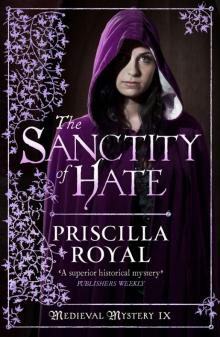 Sanctity of Hate
Sanctity of Hate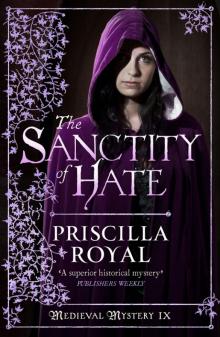 Sanctity of Hate mm-9
Sanctity of Hate mm-9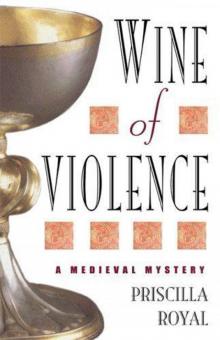 Wine of Violence mm-1
Wine of Violence mm-1